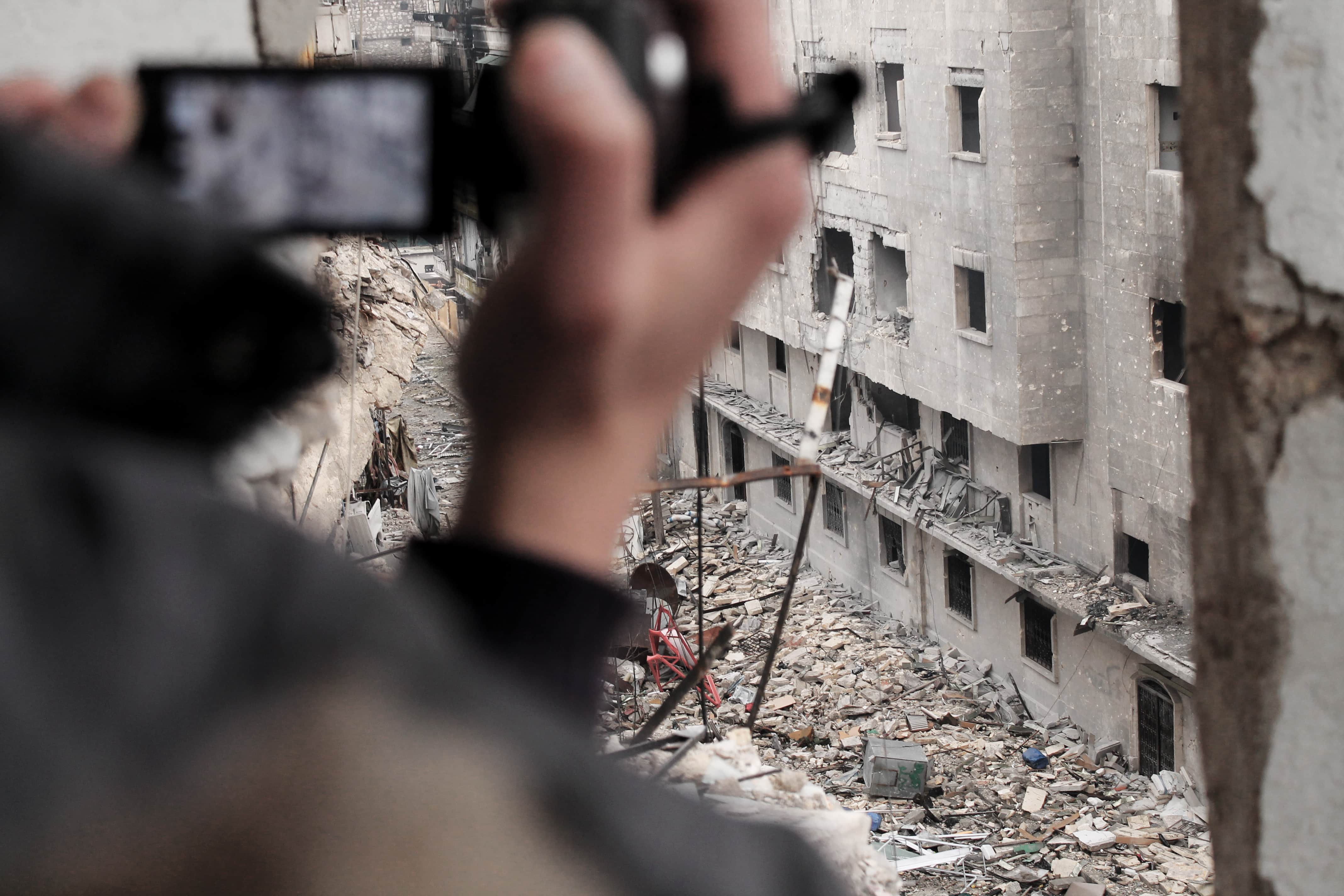The war in Syria, instability in Somalia and Taliban violence in Pakistan were the main contributing factors to the high number of journalists killed in the line of duty in 2012, IFEX members report.
There was a dramatic increase in the number of journalists killed for their work in 2012, as journalists were caught in combat or targeted for murder. The war in Syria, instability in Somalia and Taliban violence in Pakistan were the main contributing factors to the one of the highest death tolls for the media worldwide, IFEX members report.
Syria became a “cemetery for news providers“, says Reporters Without Borders (RSF). Journalists were caught in combat or targeted for murder by pro-government forces wishing to conceal atrocities being committed by the regime. They were also targeted by armed opposition groups increasingly intolerant of criticism. With international journalists blocked and traditional domestic media under state control, citizen journalists picked up cameras and notepads to document the conflict – and at least 13 of them were killed because of it, according to the Committee to Protect Journalists (CPJ). About two-thirds of the journalists killed in Syria carried a camera, CPJ found. Citizen-journalists and netizens were hit hard in many countries in 2012, but especially in Syria, RSF notes.
“This feels like the first YouTube war,” Paul Wood, a BBC Middle East correspondent told CPJ. “There’s a guy with a machine gun and two guys next to him with camera phones.” Local journalists have faced risks from all sides he said, while international journalists confronted specific challenges linked to trying to report on the conflict covertly, Wood added.
Deaths attributed to combat represented a higher proportion of the toll than in past years, according to CPJ’s year-end analysis of journalists killed in the line of duty. At least 70 journalists were killed in 2012 in direct relation to their work, the third-highest CPJ has ever recorded. Journalists who worked online made up more than one-third of the 2012 toll, representing a sharp rise from 2011, CPJ adds.
Annual tallies were also compiled by RSF [88], the International Press Institute (IPI) [133], the International Federation of Journalists (IFJ) [121] and the World Association of Newspapers and News Publishers (WAN-IFRA) [68]. RSF and IPI say 2012 was the deadliest year since they began keeping records in 1995 and 1997, respectively. The final numbers reflect differences in the methodology and criteria used by the organisations in compiling the number of journalists killed.
Those responsible for the violence against journalists in Somalia are either armed militias such as Al-Shebaab or local government officials who want to silence news outlets, according to RSF. Not a single journalist murder has been prosecuted in Somalia over the past decade, says CPJ. Local journalists told CPJ this perfect record of impunity can be attributed to corrupt and weak institutions, a situation that encourages more killing.
Endemic violence in Balochistan and Taliban reprisals were behind the targeting of journalists in Pakistan, according to RSF. Balochistan is Pakistan’s poorest region and a scene of protracted violence between separatists, anti-separatists, various tribes and ethnic groups, Pakistani security forces and intelligence agencies, and groups aligned with the Taliban, reports CPJ. At the same time, impunity for crimes committed against journalists in Pakistan continued to prevail. Owais Aslam Ali, secretary general of the Pakistan Press Foundation, told IPI that of the 48 journalists killed in the last 10 years only the murder of Wall Street Journal reporter Daniel Pearl in 2002 led to prosecutions and convictions.
Journalists continue to be silenced in Mexico where the press plays a critical role by highlighting the activities of drug cartels and corrupt politicians who support them, IPI points out. CPJ cautions, however, that the Mexican government’s failure to carry out basic investigations in many cases makes it difficult for CPJ to determine a motive.
In some cases, reporting on drug trafficking or daring to criticise local officials and highlight corruption also proved to be fatal in Brazil in 2012. The country had few journalist fatalities from 2005 to 2010, making the recent spike especially alarming to local journalists, says CPJ.
In some positive developments, excluding Syria, fatalities declined in the Middle East and North Africa, and only one journalist was reported killed in the Philippines.
IPI had criticised Somalia and other countries with a prolonged history of attacks on journalists for failing to implement policies to limit these incidents. Nevertheless, in December 2012, Somalia’s new president, Hassan Sheikh Mohamud, promised to create a task force to investigate journalists killings, a move that IPI has welcomed and that will hopefully be an effective first step in ending the cycle of violence.
There are indications of a renewed commitment to address these issues at the global level. The UN Plan of Action on The Safety of Journalists and the Issue of Impunity was officially launched at a meeting in November 2012. IFEX members and other civil society delegates participating in the meeting expressed their support for the plan and provided recommendations for its implementation. The implementation of the UN Action Plan will initially be rolled out in Iraq, Mexico, Nepal and Pakistan. “We now look to the UN Plan on the safety of journalists and the issue of impunity to deliver on its mandate,” IFJ said. “The situation is so desperate that inaction no longer represents an option.”
